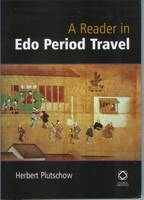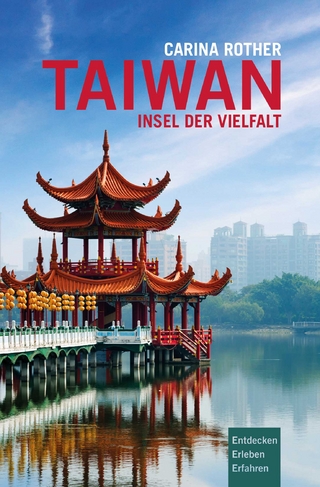
A Reader in Edo Period Travel
Global Oriental Ltd (Verlag)
978-1-901903-23-2 (ISBN)
- Titel nicht im Sortiment
- Artikel merken
Largely ignored hitherto by Western scholars, Plutschow’s Edo Period Travel provides the first in-depth study of the subject which is centred on fifteen of the period’s most notable travellers, some of whom are well known in other fields – as intellectuals, artists, poets, folklorists and natural scientists , for example – but rarely, if at all, as travellers. The first traveller put in the spotlight is the celebrated intellectual and botanist Kaibara Ekiken (1630-1714) and the last is the explorer of Ezo (now Hokkaido) and government official Matsuura Takeshiro (1818-88). Such was the thirst for knowledge in the Edo period that some travel accounts (estimated to number over 2000) became best-sellers in their day, not least for their voyeuristic appeal, including those of Kaibara Ekiken and Tachibana Nankei, which are included in this volume. This important research on how the Japanese discovered their own country and cultural identity has considerable interdisciplinary appeal. Of particular interest also is the author’s discussion on the nature of this new travel writing and the self-centred observation and ‘seeing’ that developed in the eighteenth and early nineteenth centuries, he calls the ‘Japanese Enlightenment’.
Herbert Plutschow was born in Switzerland and educated in Switzerland, England, Spain, Japan and the USA. He received his PhD in Japanese studies from Columbia University, New York, in 1973. He subsequently taught Japanese cultural history at the University of California at Los Angeles (UCLA), retiring in 2005. He has taught as visiting faculty at the Universität Zürich, International Christian University (ICU), Tokyo, Leningrad State University, International Research Center for Japanese Studies, Kyoto, École des Hautes Études (Sorbonne, Paris), Kyoto University and at Meiji Gakuin University, Tokyo. At present, he is Director of the Institute of Comparative Culture, Josei International University, Japan.
Acknowledgements; Road map of Edo Japan; Introduction; Chapter 1. Kaibara Ekiken (1630–1714); Chapter 2. Nagakubo Sekisui (1717–1801); Chapter 3. Motoori Norinaga (1730–1801); Chapter 4. Ueda Akinari (1734–1809); Chapter 5. Tachibana Nankei (1752–1805); Chapter 6. Furukawa Koshoken (1726–1807); Chapter 7. Sugae Masumi (1754–1829); Chapter 8. Takayama Hikokuro (1747–93); Chapter 9. Shiba Kokan (1747–1818); Chapter 10. Matsura Seizan (1760–1841); Chapter 11. Takizawa Bakin (1767–1848); Chapter 12. Hishiya Heishichi (Dates Unknown); Chapter 13. Tomimoto Shigetayu (Dates Unknown); Chapter 14. Watanabe Kazan (1793–1841); Chapter 15. Ono Keisan’s Network; Chapter 16. Matsuura Takeshiro (1818–88); Conclusion: Towards an Edo-Period Enlightenment; Bibliography; Glossary; Appendix I: Important Historical Dates; Appendix II: List of Edo-period Money and Measurements; Index
| Erscheint lt. Verlag | 31.8.2006 |
|---|---|
| Zusatzinfo | 27, 27 black & white plates |
| Verlagsort | Folkestone |
| Sprache | englisch |
| Gewicht | 826 g |
| Themenwelt | Reisen ► Reiseberichte ► Asien |
| ISBN-10 | 1-901903-23-0 / 1901903230 |
| ISBN-13 | 978-1-901903-23-2 / 9781901903232 |
| Zustand | Neuware |
| Haben Sie eine Frage zum Produkt? |
aus dem Bereich


